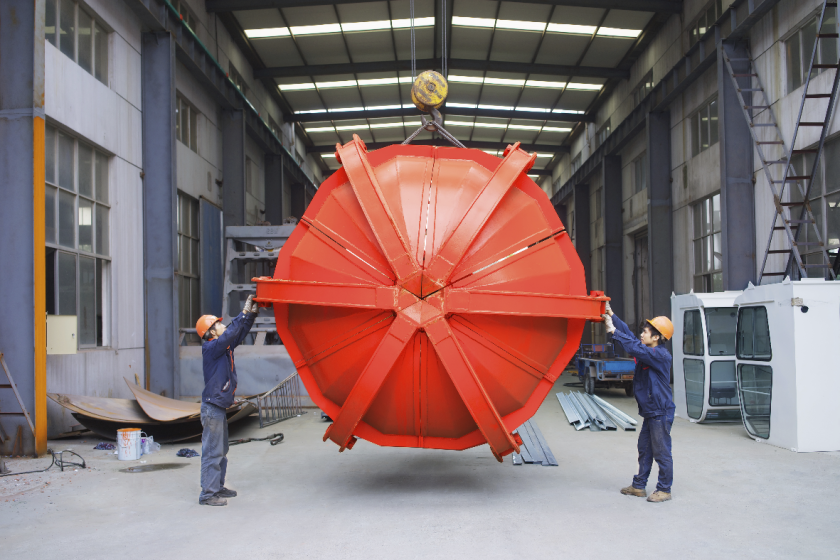Global enterprises are grappling with mounting pressures to curtail their carbon footprints. These pressures stem from both self-imposed sustainability initiatives and governmental efforts to mitigate the economic impact on our environment. For businesses in the industrial products and construction (IP&C) sector, the task of reducing carbon emissions poses a significant challenge. This is mainly due to their dependence on large, entrenched manufacturing facilities and energy-demanding treatments of raw and semi-finished materials.
International corporations operating in this space are confronted with complex decisions. They must critically assess whether they should revamp existing facilities to reduce their environmental footprints, establish new ones, or adopt a mix of both. Strategically planning and locating new sites can emerge as a crucial consideration for many impacted firms.
Concurrently, governments worldwide are promoting economic activities that prioritise green energy, sustainable manufacturing, and localised supply chains. They are leveraging both implicit and explicit subsidies as key policy tools.
Level playing field
In the IP&C arena, many businesses have already articulated ambitious goals centred on innovation and carbon emissions reduction. However, as they strive to meet these targets, they encounter competitive risks. Some of their global competitors may not be advancing at the same pace towards these objectives, possibly securing an edge in terms of product costs and pricing.
To enable a fair competitive landscape, there is a critical need for a globally harmonised and comprehensive environmental framework within the sector. Such a framework would not only encourage individual corporations to strive towards sustainability but also ensure that all players are abiding by a similar set of environmental standards, thereby avoiding distortions to global competition.
However, achieving a globally uniform playing field remains an elusive goal, as evidenced by recent international climate summits. Varied regulations across jurisdictions can distort the competitive landscape, particularly when considering imports/exports involving markets that may not enforce the same environmental standards. The lack of effective global coordination is further evidenced by the suspension or delay of multinational trade agreements (such as NAFTA and TTIP), unfulfilled key roles at the WTO, and unilateral border adjustment measures imposed by some jurisdictions.
A notable measure that has garnered attention recently is the US Inflation Reduction Act (IRA), signed by President Biden in August 2022. Marked as one of the largest subsidy programmes in the history of the US, it aims to provide incentives to the US economy to move towards a more sustainable future with lower carbon emissions.
Given the immense scale of the programme, its effects extend beyond US firms, influencing strategic decisions of European and other multinationals, particularly those within the IP&C sector.
Certain elements of the IRA are deemed protectionist, including stringent requirements for domestic US production or local content in the subsidised goods. This has provoked international backlash and, in some instances, demands for comparable protective countermeasures in other regions, like the EU.
The EU’s initiatives, such as the Next Generation EU programme, currently do not mandate local content or production, remaining accessible to companies from the EU and other regions, regardless of their manufacturing locations. However, there have been calls within Europe to amend these regulations to safeguard and draw more production to the EU, considering the appealing conditions attached to US production under the IRA.
Many observers have raised alarms about a potential “subsidy race,” escalating trade barriers, and rising protectionism, which could inflict harm on both multinational corporations and the involved states. For multinational IP&C firms, an equitable international trade landscape is vital due to the global scale required to efficiently develop and manufacture their specialised goods, and the cross-border supply chains necessary for their production.
Governments are generally conscious of the pitfalls associated with escalating trade barriers. Specifically, the EU and the USA are currently engaged in dialogues to find mutually acceptable solutions that avert the intensification of protectionism and subsidies in their bilateral trade discussions.
In the interim, European multinationals are navigating the existing regulatory environment, meticulously evaluating their options. Considering the IRA, many IP&C firms — traditionally interwoven with various global economies — have recently considered bolstering their US operations. This decision is motivated by macroeconomic and political factors that have enhanced the appeal of the US market. Consequently, numerous European IP&C corporations have indicated a redirection of portions of their intended foreign investments from other global regions to the US.
IRA impacting global IP&C multinationals
A core provision of the IRA encourages sustainable energy generation and investment in decarbonisation measures. It offers subsidies in the form of uncapped tax credits, set to be broadened in 2025 to encompass a wide array of low-emission energy production activities, regardless of the technology utilised, even extending to nuclear energy.
Parallel to energy production, existing subsidies for sustainable fuel sales are initially extended, with new subsidies for specific technologies, such as low-emission hydrogen production in the US, being implemented as early as 2023. Expanded subsidies for all types of low-emission fuels will be offered from 2025 onward. In tandem with endorsing sustainable fuels, the IRA also increases incentives for electric vehicle purchases (clean vehicle credit) and the manufacturing of components necessary for a transition to cleaner energy generation and usage.
These subsidies relating to clean energy production, clean fuels, and electric vehicle purchases can be substantial, with full subsidy eligibility in many cases being contingent on the use of US-based steel, iron, industrial components, and US content in electric vehicle batteries. Given that the required raw materials, semi-finished goods, industrial components, and battery components have often been historically supplied by IP&C sector multinationals utilising a globally dispersed production network, these "local content" rules embedded in the IRA can directly impact these companies' offerings. Consequently, these rules become pivotal new factors for IP&C companies in allocating production content to their sites and making strategic site location decisions.
Viewing the broader picture, the IRA measures collectively are expected to serve as a stimulus to the US economy, potentially driving demand on the US market for certain clean energy and climate-friendly industrial products. Thus, even without directly benefiting from any specific IRA programmes, focusing on the US market may become more attractive for global IP&C companies, compared to previous years, due to medium and long-term increased demand expectations for the respective products.
Conversely, to fund these subsidies, the IRS is slated to receive additional resources to boost tax collection, primarily from corporations and high-income taxpayers. In addition, the corporate alternative minimum tax establishes a new minimum tax rate of 15%, levied on a broad tax base. For US-based companies, the tax base will generally be based on global adjusted financial statement income (AFSI). Non-US companies are impacted if they show a consolidated AFSI of at least $1 billion, and their American subsidiaries generate an AFSI of at least $100 million. Thus, non-US companies' subsidiaries may also be subject to US tax increases if their effective US tax was previously below 15%. The US Joint Committee on Taxation projected in 2022 that approximately 150 companies would be subject to increased tax collection, with expected additional tax revenue of $34 billion in the first year. Nearly half of this additional tax burden is anticipated to come from the manufacturing sector.
Actionable recommendations for tax and TP departments
Inform business decisions with tax and TP impact assessments:
As sustainability goals evolve and government incentives shift, many multinational groups' management may reconsider their business focus and production capacities.
Tax-related questions include:
Which requirements need to be met to be entitled to incentives, such as those provided by the IRA?
What are expected subsidy amounts compared to compliance costs and potentially one-time costs associated with a re-focusing of group activities?
Which disadvantages might be incurred if the group is ineligible for incentives and/or border adjustments might apply in the future?
How will changes in manufacturing footprint influence the group’s overall effective tax rate and withholding tax profiles due to jurisdictional footprint changes?
Which legal entity within the group can be entitled to incentives and/or benefits associated with increased market demand?
Should such benefits be reflected in potential exit tax valuations?
Are tangible/intangible assets transferred (or made available) by other group entities as part of a geographical reallocation of responsibilities?
Could benefits in other jurisdictions be lost (retroactively) due to a potential reduction in their local manufacturing scope?
Additional considerations related to TP set-ups
Setting up new manufacturing operations, for instance in the US, opens opportunities to newly design and/or re-evaluate certain TP policies. Most notably, the treatment of local subsidies impacting legal entity margins should be closely analysed, especially if year-end adjustments are used to guarantee specific target margins for subsidiaries.
More broadly, the adequate classification of potential future manufacturing activities needs consideration. Different operating models, such as toll manufacturers, contract manufacturers, and license manufacturers, feature distinct functional and risk profiles and must be compensated accordingly under the arm’s length principle. Establishing new production facilities offers opportunities to create novel remuneration mechanisms, depending on the specific factors relevant for the given jurisdiction.
The US government has – at least nominally - linked the IRA measures to the high inflation rates seen globally. With global inflation rates reaching levels not seen in industrialised countries for some time, it is important to review whether contracts and/or prices with suppliers and customers need adjustment and to ensure compliance with the arm’s-length principle in the group’s internal TP policies.
For instance, contract manufacturers, typically remunerated on a cost-plus basis, might see unexpected year-end returns due to sharp price increases for raw materials, energy, or other inputs. Limited risk distributors, usually compensated with a low but stable margin, might face incompatible year-end results, especially if transfer prices in intercompany agreements fail to keep pace with rising external market prices.
Transfer prices (or intercompany interest rates) set with reference to externally observed comparable uncontrolled prices (CUPs) should also be closely monitored for market price fluctuations in the current environment and the comparability of such prices should be frequently re-assessed.
Strategic recommendations for tax managers
The introduction of the IRA incentives poses an immediate and significant challenge for companies in the IP&C industry, both in and outside of the US.
Given the potentially substantial influence of sustainability shifts and government incentives on a group's value creation, it is imperative for tax managers to establish adaptable tax policies and procedures for rapid adjustment. It is also vital to keep a close watch on regulatory changes, especially those pertaining to trade sanctions, export bans, tax amendments and incentive programmes.
Simultaneously, tax departments can become valuable contributors to their organisations by gaining a comprehensive understanding of global tax regimes, carbon-related regulations as well as incentivisation regimes. By implementing well-defined processes to monitor such developments, tax departments can have a vital role for management decisions in this space. To free up resources for such additional high-value activities, adopting technology roadmaps and employing effective tools for all daily administrative tasks is essential. The freed-up resources can then be redirected towards strategically important and value-adding facets to contribute meaningfully to the organisation's strategic goals and sustainable growth.












